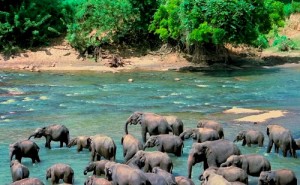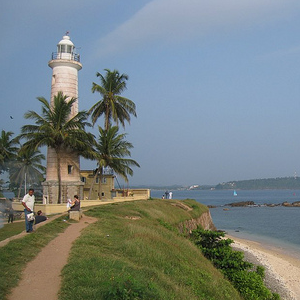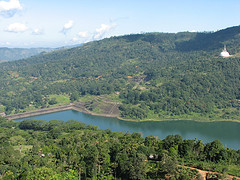For decades, Sri Lanka was battling political unrest. A civil-war between Tamil insurgents and the Sinhalese government almost destroyed the tourism industry. Then, the tsunami of 2004 devastated certain coastal regions of the country. Luckily, the riots have ended and the coastlines have been restored, and this tear-drop shaped paradise off the Southern coast of India is waiting to be rediscovered by travelers worldwide.
It is easy to list generic enticements to visit Sri Lanka, including affordability, historical significance, culture, and hospitality. All of this is true – the country was even recently named one of the top 15 most affordable destinations in the world. Additionally, here are five identifiable attractions in Sri Lanka that are reason enough to pack your bag.

Pinnawela Elephant Orphanage
Pinnawela is a renowned government run orphanage that houses retired, abused or orphaned elephants. It was established in 1975 by the Sri Lankan Department of Wildlife Conservation on an expansive coconut plantation. Pinnawela has earned a reputation as the largest elephant refuge in the world, and has one of the most successful captive breeding programs for Asian elephants. The orphanage is open to the public daily and the admission fees are used to care for the elephants and habitat.

Galle Fort
The Galle Fort, also known as the Ramparts of Galle and the Dutch Fort, is located in the Bay of Galle in Southeast Sri Lanka. It was built by the Portuguese in 1558, fortified by the Dutch in 1649, and came under British control in 1796.The fort layout resembles a small town and residents still live inside the walls, including Sinhalese, Dutch, Germans, Portuguese, English, and Muslim Moors. Reserve a room at the Galle Fort Hotel, awarded as Sri Lanka’s Leading Boutique Hotel by the World Travel Awards. Also visit nearby Hikkaduwa, a coastal town famous for its beaches, surfing, and corals.
Nuwara Eliya
Nuwara Eliya is the heart of Sri Lankan hill country. The rolling mountains are a carpet of velvety green tea plantations interspersed with tumbling waterfalls. Overlooked by Pidurutalagala, the tallest mountain in Sri Lanka, Nuwara Eliya is known for its tea production, including the famous Ceylon and Orange Pekoe tea. Consider visiting in April during the Tamil and Sinhalese New Year, when local festivals fill the town square and surrounding villages.
Dambulla
The Dambulla Cave Temple, or the Golden Temple of Dambulla, is the largest preserved cave temple complex in Sri Lanka. It is a registered UNESCO World Heritage Site and accommodates ancient Buddha statues and historic artwork celebrating Buddha’s life. The complex has 5 distinct caves, each serving as a shrine room. The grounds also feature a functioning Buddhist Monastery dating back to the second century B.C.

Polonnaruwa
Polonnaruwa is an ancient Sri Lankan kingdom and remains one of the best planned archaeological relics in the country. The UNESCO site houses the ruins of a garden-city created by Parakramabahu I in the 12th century and Brahmanic monuments built by the Cholas. The Polonnaruwa district also features fantastic wildlife sanctuaries, including the Minneriya and Wasgomuwa National Parks. For an artsy experience, consider a traditional dance performance at one of the cultural centers.

